Cheddar
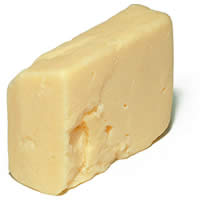 The most recognized and most popular of all cheeses is cheddar. Sometimes with all the artisinal cheeses that we cover, we overlook those that we consider ordinary. Cheddar is versatile and delicious and is a welcomed addition to any cheese platter.
The most recognized and most popular of all cheeses is cheddar. Sometimes with all the artisinal cheeses that we cover, we overlook those that we consider ordinary. Cheddar is versatile and delicious and is a welcomed addition to any cheese platter.
Central to the modernization and standardization of cheddar cheese was Joseph Harding in the nineteenth century. Described as the father of cheddar cheese, Joseph Harding was responsible for the introduction of modernising cheddar production along a scientific approach. He was responsible for the introduction of this very English cheese into Scotland and North America. Joseph Harding's son, Henry Harding, was responsible for introducing cheddar cheese production to Australia.
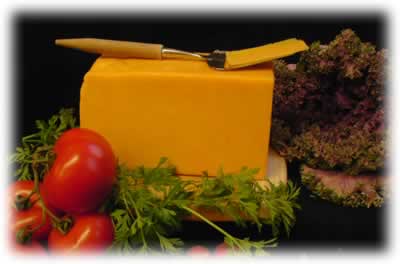 Cheddar cheese is a relatively hard, pale yellow to off-white, and sometimes sharp-tasting cheese originating from the English village of Cheddar, in Somerset. Cheddar cheese is the most popular cheese in the United Kingdom, accounting for 51% annual cheese market. Although cheddar cheese is originally English, it is also widely produced in other countries. Most noteably in the United States, Wisconsin and Vermont are best known for American cheddars.
Cheddar cheese is a relatively hard, pale yellow to off-white, and sometimes sharp-tasting cheese originating from the English village of Cheddar, in Somerset. Cheddar cheese is the most popular cheese in the United Kingdom, accounting for 51% annual cheese market. Although cheddar cheese is originally English, it is also widely produced in other countries. Most noteably in the United States, Wisconsin and Vermont are best known for American cheddars.
Cheddar
The origins of cheddar cheese are ancient. The cheesecheesecheese was first made in Cheddar, a village in Southeast England (see below), and historical records indicate that the cheesecheesecheese has been made since at least the 1100s. Today, cheese from Cheddar has an Appellation of Controlled Origin, along with cheddar cheesecheesecheese from neighboring counties in that region of England. Since “cheddar cheesecheesecheese” has become so generic, protected cheddar is labeled as “West Country Farmhouse Cheddar,” and a small seal indicating that it has earned Appellation certification.
 Many consumers associate the color orange with cheddar cheese, due to a long tradition of adding dyes to the cheese to change the color. Orange cheddars are colored with annatto, a natural dye. Canadian cheddars are smoother, creamier, and are known for their balance of flavor and sharpness. In fact, cheddar cheese is naturally a creamy to pale white, although orange cheesecheesecheese has become much more common. Cheddar cheese also has a wide range of flavors, depending on how it is made and how long it is aged. Young cheddar cheese tends to be more mild, while longer aged cheesecheesecheese has a more sharp, complex flavor. At a minimum, cheddar cheese is aged for around three months, but aging can take as much as 30 months.
Many consumers associate the color orange with cheddar cheese, due to a long tradition of adding dyes to the cheese to change the color. Orange cheddars are colored with annatto, a natural dye. Canadian cheddars are smoother, creamier, and are known for their balance of flavor and sharpness. In fact, cheddar cheese is naturally a creamy to pale white, although orange cheesecheesecheese has become much more common. Cheddar cheese also has a wide range of flavors, depending on how it is made and how long it is aged. Young cheddar cheese tends to be more mild, while longer aged cheesecheesecheese has a more sharp, complex flavor. At a minimum, cheddar cheese is aged for around three months, but aging can take as much as 30 months.
As cheddar slowly ages, it loses moisture and its texture becomes drier and more crumbly. Sharpness becomes noticeable at 12 months (old cheddar) and 18 months (extra old cheddar). The optimal aging period is 5-6 years; however, for most uses three-year-old cheese is fine and five-year-old cheddar can be saved for special occasions.
As is the case with all cheeses, several things set cheddar cheese aside from other cheesecheesecheese. The first is the bacteria that the cheesecheesecheese is fermented with. The second is the manufacturing process. Cheddar cheese undergoes a process called “cheddaring” while it is processed to yield a distinct level of moisture and unique texture. The cheddaring process is quite distinctive, and it dramatically alters the end product.
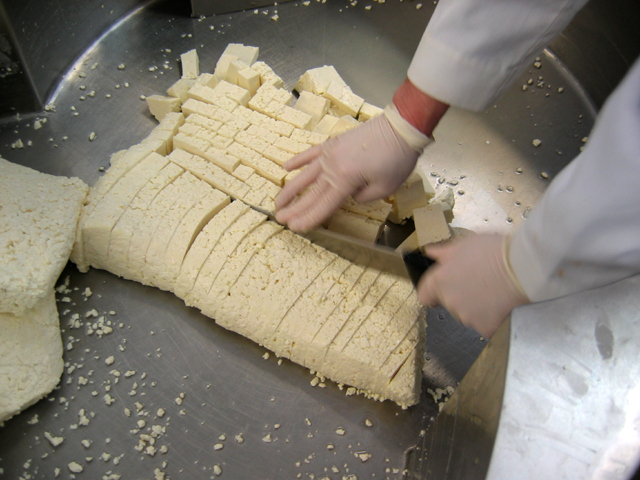
To make cheddar cheese, milk is mixed with cultures and rennet to form curds, which are gently heated, cubed, and drained. The draining process causes the curds to mat up, and the mat is cut into loose 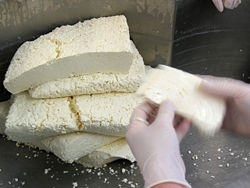 blocks of cheesecheesecheese which are periodically turned, allowing the curds to drain even more. This process is called cheddaring, and it results in a very distinct cheesecheesecheese.
blocks of cheesecheesecheese which are periodically turned, allowing the curds to drain even more. This process is called cheddaring, and it results in a very distinct cheesecheesecheese.
The 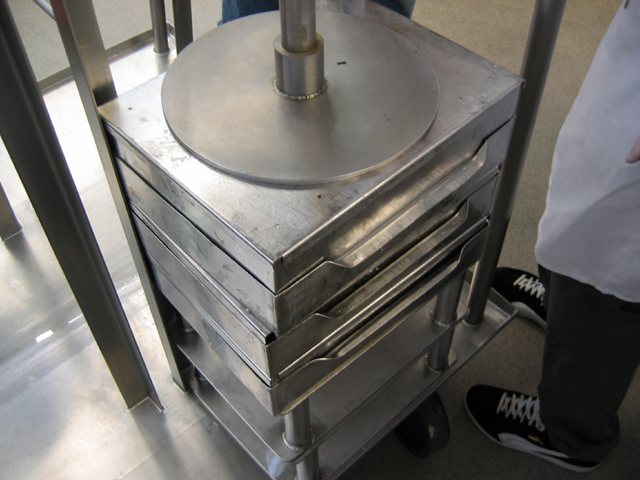 curds may also be stacked to create a more moist cheesecheesecheese at the discretion of the cheesemaker. Next, the cheddared curds are cut, salted, and packed into molds to age.The best is still called Farmhouse Cheddar, but in America we have practically none of this. Back in 1695 John Houghton wrote that it "contended in goodness ( if kept from two to five years, according to
curds may also be stacked to create a more moist cheesecheesecheese at the discretion of the cheesemaker. Next, the cheddared curds are cut, salted, and packed into molds to age.The best is still called Farmhouse Cheddar, but in America we have practically none of this. Back in 1695 John Houghton wrote that it "contended in goodness ( if kept from two to five years, according to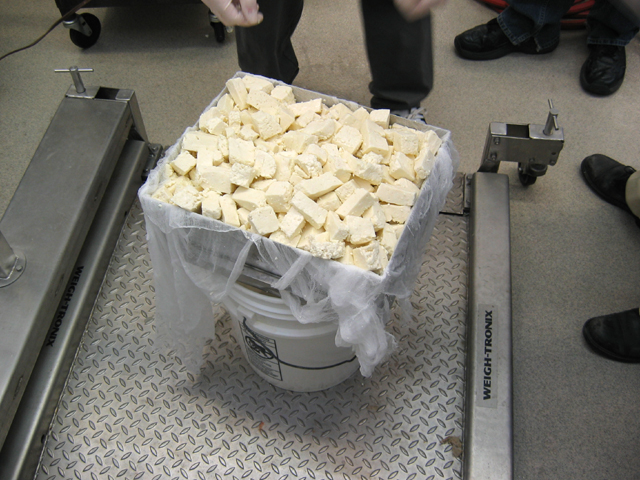 magnitude) with any cheese in England." Today it is called "England's second-best cheese," second after Stilton, of course. In early days a large cheese sufficed for a year or two of family feeding, according to this old note: "A big cheddar can be kept for two years in excellent condition if kept in a cool room and turned over every other day."
magnitude) with any cheese in England." Today it is called "England's second-best cheese," second after Stilton, of course. In early days a large cheese sufficed for a year or two of family feeding, according to this old note: "A big cheddar can be kept for two years in excellent condition if kept in a cool room and turned over every other day."
One lady of the larder was questioned on how she kept cheddar cheese. Her eyes twinkled: 'We don't keep cheese; we eats it.'"
Cheddar, England
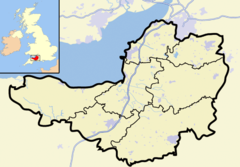 The village is famous for having given its name to cheddar cheese which is the most popular type of cheese in the United Kingdom. Although the cheese is now made worldwide, only one producer remains in the village itself.
The village is famous for having given its name to cheddar cheese which is the most popular type of cheese in the United Kingdom. Although the cheese is now made worldwide, only one producer remains in the village itself.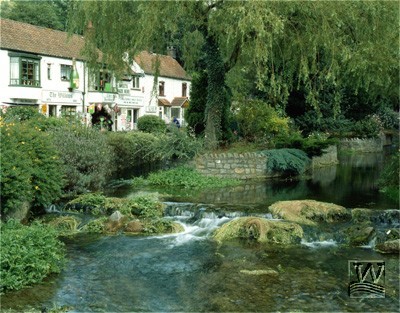
Cheddar's other main produce is the strawberry, which gave name to the now disused Strawberry Line railway that ran from Yatton to Wells. In the 1960s, when the rest of the line was closed and all passenger services ceased, the section of the line between Cheddar and Yatton remained open for goods traffic, to provide a fast link with the main markets for the strawberries in Birmingham and London. The former station has become housing and a trading estate, and is the starting point for a cycle path along the old track to Axbridge, passing the Cheddar Reservoir, a Site of Special Scientific Interest (SSSI) for its large population of wintering waterfowl, and the home of a sailing club.
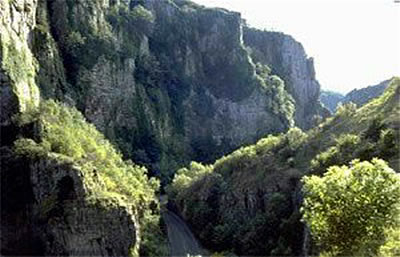
Cheddar Gorge is the largest gorge in the United Kingdom. The gorge is the site of the Cheddar Caves, where Britain's oldest complete human skeleton, Cheddar 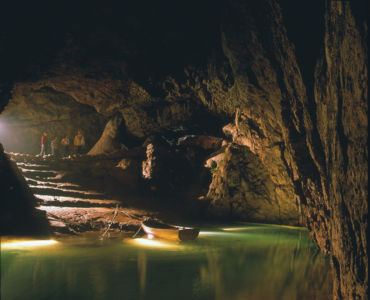 Man, estimated to be 9,000 years old, was found in 1903.
Man, estimated to be 9,000 years old, was found in 1903.
Saxon Palace
In the 10th century the Witenagemot met three times at the Saxon Palace in Cheddar. The ruins of the palace were excavated in the 1960s and are located in the grounds of The Kings of Wessex School, together with a 14th century chapel dedicated to St Columbanus. Roman remains have also been uncovered at the site.
St Andrew's Church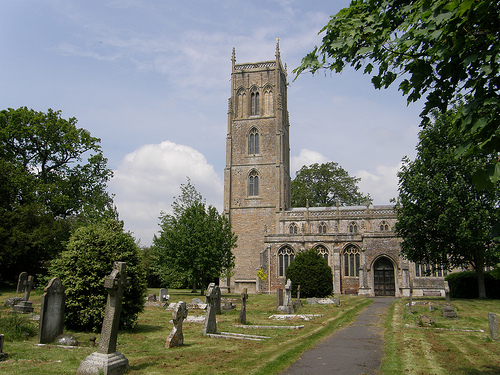
The Church of England parish church is dedicated to St Andrew and dates from the 14th century. It was restored in 1873 by William Butterfield. It is a grade I listed building and contains some 15th century stained glass and an altar table of 1631. The chest tomb in the chancel is believed to be to Sir Thomas Cheddar and dated 1442. The tower, which rises to 100 feet, contains a bell dating from 1759 and made by Thomas Bilbie of the Bilbie family.
Market Cross
 The market cross in Bath Street dates from the 15th century, with the shelter being rebuilt in 1834. It has a central octagonal pier, socket raised on four steps, hexagonal shelter with six arched four-centred arch openings, shallow two stage buttresses at each angle, and embattled parapet. The shaft is crowned by an abacus with figures in niches, probably from the late 19th century although the cross is now missing. Rebuilt by Thomas, Marquis of Bath. It was recently restored after being seriously damaged in a road traffic accident.
The market cross in Bath Street dates from the 15th century, with the shelter being rebuilt in 1834. It has a central octagonal pier, socket raised on four steps, hexagonal shelter with six arched four-centred arch openings, shallow two stage buttresses at each angle, and embattled parapet. The shaft is crowned by an abacus with figures in niches, probably from the late 19th century although the cross is now missing. Rebuilt by Thomas, Marquis of Bath. It was recently restored after being seriously damaged in a road traffic accident.


